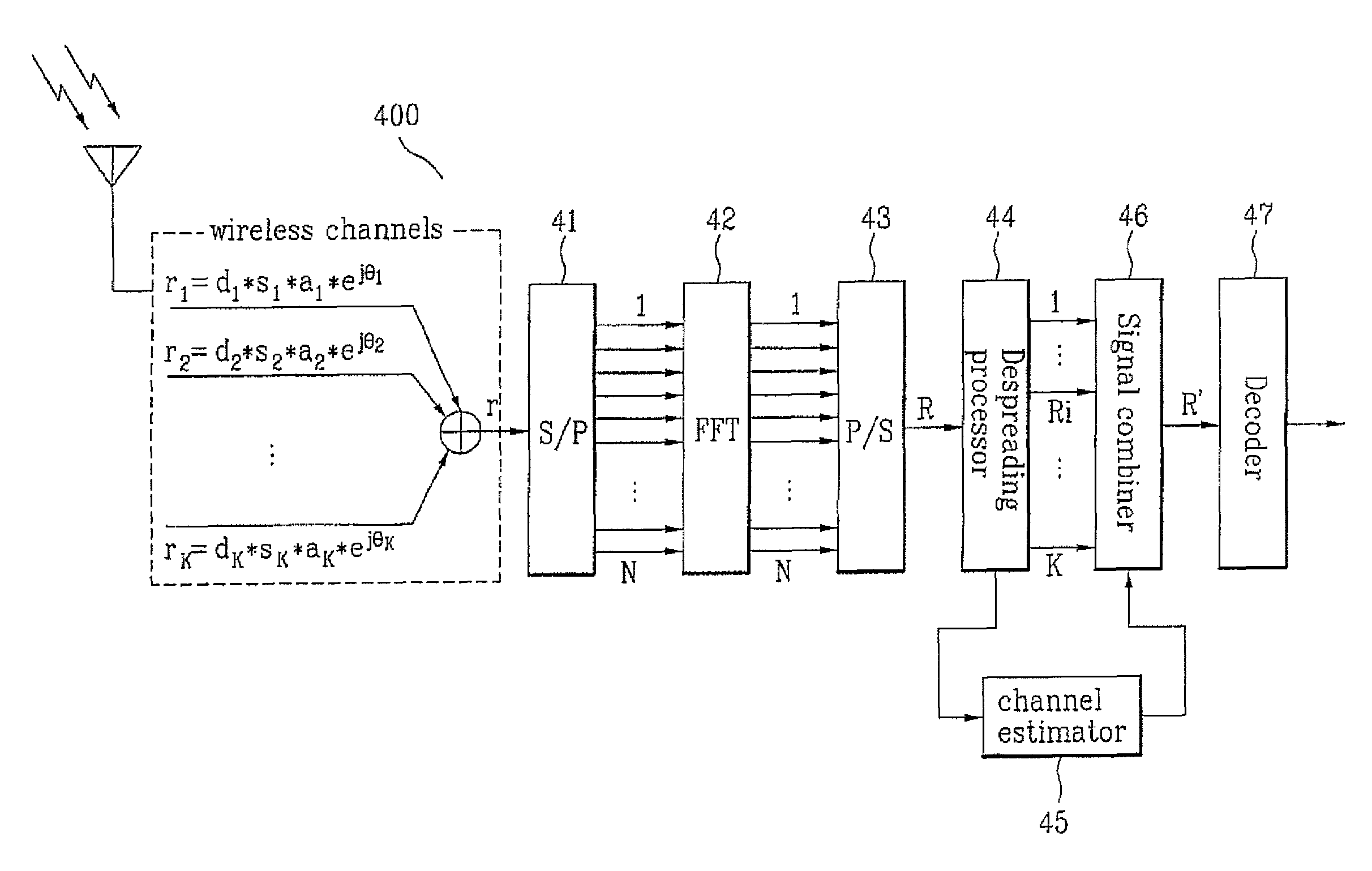Apparatus and method for receiving signals in multi-carrier multiple access systems
a multi-carrier, multi-access technology, applied in multi-frequency code systems, baseband system details, wireless communication, etc., can solve the problems of increasing the macroscopic diversity gain, current multi-, and not compensating amplitude distortions by egc methods, so as to maximize the macro diversity gain and effectively combine signals
- Summary
- Abstract
- Description
- Claims
- Application Information
AI Technical Summary
Benefits of technology
Problems solved by technology
Method used
Image
Examples
Embodiment Construction
[0017]Reference will now be made in detail to the preferred embodiments of the present invention, examples of which are illustrated in the accompanying drawings.
[0018]Wherever possible, the same reference numbers will be used throughout the drawings to refer to the same or like parts.
[0019]An explanation is given, as an example, for the Orthogonal Frequency Division Multiple Access (OFDMA) which is one of multi-carrier multiple access systems. The OFDMA is a system in which a plurality of users performs multiple accesses using OFDM.
[0020]FIG. 1 shows a method of receiving data in a mobile station during handover.
[0021]The mobile station during handover receives data from K number of base stations in the same frame format. That is, the data received by the mobile station have the same frame format since the data received in the mixed form are not distinguishable by each base station.
[0022]Moreover, because channel estimations can not be done by each base station, the received data ar...
PUM
 Login to View More
Login to View More Abstract
Description
Claims
Application Information
 Login to View More
Login to View More - R&D
- Intellectual Property
- Life Sciences
- Materials
- Tech Scout
- Unparalleled Data Quality
- Higher Quality Content
- 60% Fewer Hallucinations
Browse by: Latest US Patents, China's latest patents, Technical Efficacy Thesaurus, Application Domain, Technology Topic, Popular Technical Reports.
© 2025 PatSnap. All rights reserved.Legal|Privacy policy|Modern Slavery Act Transparency Statement|Sitemap|About US| Contact US: help@patsnap.com



